Blog
News, updates, finds, stories, and tidbits from staff and community members at KAHEA. Got something to share? Email us at: kahea-alliance@hawaii.rr.com.
Another Mass Whale Stranding
Yep, February was “Humpback Whale Awareness Month” in the states, but March is looking like a not-so-hot one for other cetaceans…
Military sonar among suspected causes of mass whale stranding on the Tasmanian shore over the weekend.
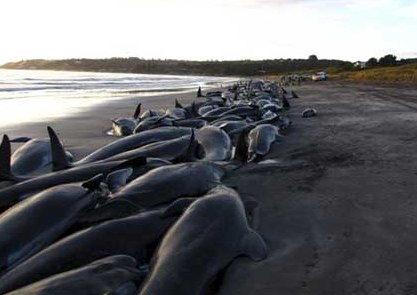
Mark Simmonds, of the Whale and Dolphin Conservation Society and an expert on cetacean strandings, said that two species coming ashore together was enough to arouse suspicions of a human factor, including the use of sonar by the military.
Half Way To Victory!
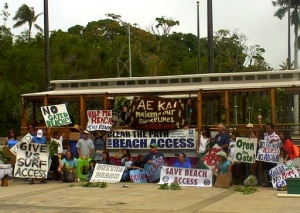
Beach access got a real boost today. Hawaii’s Senate Judiciary Committee just passed SB 1088, which will help to improve enforcement of public access rights to the shoreline and inland recreational areas. Yay!
Big Mahalos to everyone who submitted testimony! There is still a chance to help out in this important effort.
The bill is ready to “cross over” to the House of Representatives, where it will go through a similar committee hearing process. Unfortunately, the first committee that will likely hear this bill declined to hear a similar bill in the past.
To ensure that SB 1088 does not suffer the same fate, please take a moment to contact the Committee’s chairperson, Representative Ken Ito either at 808-586-8470 or repito@capitol.hawaii.gov. Just leave a nice message encouraging him to hear the bill and help protect beach access in Hawaii.
We can start collecting testimony now in support of this bill by encouraging friends, family, and all outdoor lovers to visit our nifty virtual testimony table. Watch for action alerts in your inbox next month calling for public testimony in support of this and other bills that protect the public’s right to open and safe beach access. You can sign up with our email action alert network by clicking here.
Now, where did we leave those things?
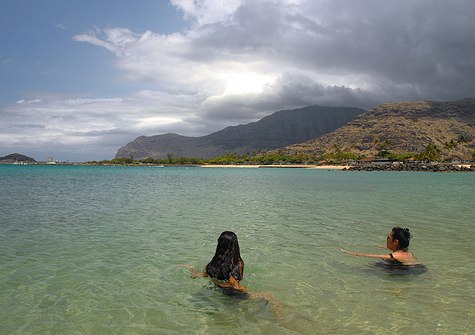
UH, the Army and NOAA are getting around next week to looking for chemical weapons dumped off the Waianae Coast in the 1940s. A public report released in 2001 by the Army’s Historical Research and Response Team identified over 4,000 tons of dumped chemicals munitions, including hydrogen cyanide bombs, cyanogens chloride bombs, mustard bombs and lewisite.
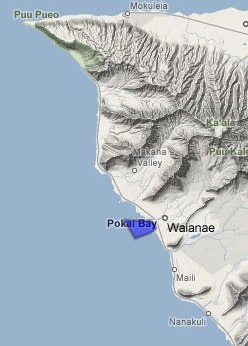 In the past, the Army has assured community members that chemical munitions will dissipate before causing any serious damage or that the pressure and cold temperatures of the depths of the ocean will render munitions inert–at least, in theory. In reality, containers corrode over time, releasing the chemicals into the ocean. The longer the chemicals remain in the ocean, the greater the chances for a rupture or leak.
In the past, the Army has assured community members that chemical munitions will dissipate before causing any serious damage or that the pressure and cold temperatures of the depths of the ocean will render munitions inert–at least, in theory. In reality, containers corrode over time, releasing the chemicals into the ocean. The longer the chemicals remain in the ocean, the greater the chances for a rupture or leak.
‘There are a number of avenues of risk associated with this. The highest is to marine life. In small doses chemicals can accumulate in animals and work their way up the food chain. There are also impacts on the reproductive capabilities of some species, in addition to the lethality of higher doses.” – Craig Williams, Chemical Weapons Working Group
Next week’s effort is part of an eventual plan to attempt to remove or destroy in place dumped munitions off the Waianae Coast. The communities along the Waianae Coast have for years advocated for clean-up, over Army objections.
“If you’re telling the community that there is nothing to be afraid of, and that it (ordnance) can stay in the ocean without any consequences, then by the same token you should be able to remove it.” – Colleen Hanabusa, State Senator, 21st District
Star-Bulletin Coverage at: http://www.starbulletin.com/news/20090225_Depth_Chargers.html
Understatement of the Month
From the Honolulu Advertiser coverage of the grounding and sewage release by the U.S. Navy’s 567-foot Port Royal:
The omission was one more bit of embarrassment heaped onto the 3 1/2-day spectacle of a 9,600-ton warship capable of shooting down ballistic missiles in space sitting helplessly aground in 17 to 22 feet of water just off Honolulu International Airport’s reef runway.
We’d like to officially submit “one more bit of embarrassment” as the understatement of the month.
Full article at: http://www.honoluluadvertiser.com/apps/pbcs.dll/article?AID=/20090211/NEWS08/902110398
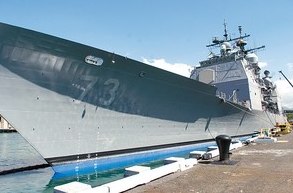
The Old Wheel that Worked
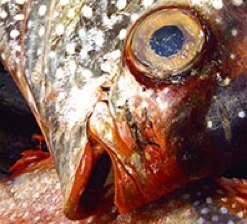 Kauai-based journalist Joan Conrow has written an excellent piece featuring Uncle Isaac Harp and his efforts to fundamentally change Hawaii’s broken system of fisheries management.
Kauai-based journalist Joan Conrow has written an excellent piece featuring Uncle Isaac Harp and his efforts to fundamentally change Hawaii’s broken system of fisheries management.“We need to stop figuring out how to be a new wheel and go back to the old wheel that worked,” Harp says. “We need to get back into ahupua‘a management. It’s not that complicated.”
Read the full article at: http://honoluluweekly.com/cover/2009/02/woe-fish/
Dead Female Humpback found in Kekaha
Female humpback whale calf will be buried at the Pacific Missile Range Facility (PMRF), perhaps appropriate–since PMRF is the place where much of the high intensity sonar activity in Hawaii is centered. The Navy 20 years ago placed sonar devices on the ocean floor off the west coast of Kauai to detect and track underwater activity.
Maybe we can count this one against the 20 serious injury or mortality ‘takes’ for seven species of marine mammals the Navy requested a few years ago. Sigh.
From the Associated Press:
Officials are conducting a necropsy on a dead humpback whale calf that washed ashore in western Kauai this week.
A veterinarian, National Oceanic and Atmospheric Administration officials and the Hawaii Pacific University Marine Mammal Response Team arrived on Kauai on Tuesday to determine how the whale died. A Kauai cultural practitioner met the group and conducted appropriate cultural practices over the remains. NOAA said the whale is 17 feet long and is female. The cultural practitioner is expected to return to conduct ceremonies for the whale, and the remains will be buried on site at the Pacific Missile Range Facility. A tour boat captain spotted the dead whale in the vicinity of Kokole Point in Kekaha at about 8:45 a.m. Monday.
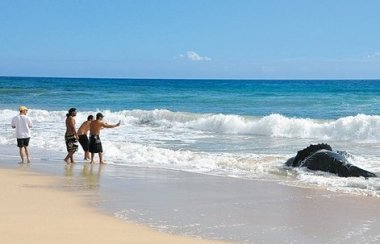
Navy and WESPAC stand in way of Marine Monuments in the Pacific
Some random quotes about the opposition to marine monuments in the Pacific from “Islands Business International” a Fijian on-line newspaper.
The obstacles it cites: first the Navy, then WESPAC.
“Ironically, the most significant opposition to extending the monuments to the full EEZs of the 11 islands had nothing to do with fishing: it came from the US Navy. Even though Bush specified in a memorandum last August that the monument designation “should not limit the department of defense from carrying out its mission” in the Pacific, senior Pentagon officials expressed concern that it could lead to future restrictions on their ability to carry out their tasks. They cited lawsuits restricting the use of active sonar, which injures whales and dolphins, that arose from Bush’s designation of the Northwestern Hawaiian Islands monument two years ago. “Without the Navy, I think the monuments would have been a lot bigger,” said one environmentalist.”
But that did not prevent aggressive pushback from Pacific marine conservationists’ old nemesis, the Western Pacific Regional Fishery Management Council, a federal agency whose executive director, Kitty Simonds, has fought restrictions on fishing for three decades. Wespac is tasked with protecting the interests of fishing companies as well as insuring that these interests don’t reduce fish stocks, but it has presided over the rapid collapse of lobster stocks in the Northwestern Hawaiian Islands and a steep decline in the fish stocks of the Main Hawaiian Islands. It has even encouraged the issuance of commercial bottom-fishing and lobster-fishing permits in the National Wildlife Refuges of Baker, Howland, Kingman, Jarvis, Johnston and Palmyra, in violation of federal laws, says Jim Maragos, a veteran Fish and Wildlife Service scientist.
In Saipan, where tourism and the garment industry are in free-fall, a pro-monument petition attracted 6000 signatures and the Hotel Association and the Chamber of Commerce endorsed turning the waters around the three northernmost islands—Maug, Asuncion and Uracus—into a marine national monument. “Almost no one is able to enjoy these islands at this time,” wrote Lynn Knight, chairwoman of the association, in a letter to Bush, while monument status would “boost the local economy in promoting ecotourism”.
In contrast, the governor and most of the legislature have voiced their opposition to what they call “The Pew Monument” in language that strikingly resembles Wespac’s.
“The opposition was led by Wespac in every regard,” said Rick Gaffney, a former Wespac council member. “Without Wespac,” added Andrew Salas, a former Marianas legislator, “the opposition would have been minimal. There would have been a bit of grumbling because relations between the Marianas government and the federal government are pretty bad these days, but that’s it, because the overwhelming majority of the people support the monument.”
Wespac is under investigation by the US General Accountability Office and the Inspector General of the Commerce Department for suspected illegal lobbying. In a letter to Bush that received wide publicity in Saipan, Aha Kiole, an organisation essentially created by Wespac to prevent marine reserves from being created in Hawaii, accused the president of having created the Northwestern Hawaiian Islands reserve “without the participation of the Native Hawaiian people,” all of whom feel “anger, trepidation and despair” whenever the monument “is mentioned.” Although more than 100 hearings were held on the issue over six years, the letter asserts that most Hawaiians “did not know that the Pew Foundation was planning to take three-fourths of Hawaiian lands and make it into a monument.” (In fact, the total land area of the ten-islet monument is 13 sq km, while the rest of Hawaii totals 16,635sq km).
The Marianas monument, the letter continued, “will take an integral part of the Marianas culture away from the native people—with no hope of ever getting this part of their heritage back”. Like all federal agencies, Wespac is barred from spending federal funds to lobby the legislative branches of state and federal government. The General Accounting Office, the investigative arm of Congress, and the Inspector General of the Commerce Department are currently both investigating allegations that Wespac lobbied the US Congress and the Hawaii legislature to push its pro-fishing, anti-conservation agenda, notably in creating Aha Kiole.
In Saipan, much of the political elite has ties to Wespac. The governor’s chief of staff, Ray Mafnas, is a senior, unsalaried Wespac official who collects over US$600 a day every time he travels for Wespac. Arnold Palacios, Speaker of the House, is a former member of the Wespac council. He wrote in a letter to Bush that the “loss of control over such a vast area of land and water is an assault on the traditions and culture of the islands.” The representative Speaker Palacios appointed as chairman of the House Federal Relations Committee, Representative Diego Benavente, is a former lieutenant governor who is running for governor. He engineered the approval of two He was president of the Saipan Fishermen’s Association in 2005 when it got a US$150,000 grant from Wespac to rent and equip a store to sell its members’ catch. But this past December, the Marianas Variety reported that the store had closed two months after it opened because of unexpected expenses “like utilities, rent, and salaries.”
Benavente was quoted as saying: “We ran out of money, basically.”
Valentin Taisakan, the mayor of the Northern Islands Municipality, which lies south of the three islands designated as a monument by Bush in January, also wrote to Bush in opposition to the monument. Taisakan, who lives in Saipan, received a US$90,000 Wespac grant to create a fishing base in his remote municipality, but the base never opened, according to Saipan sources. In another letter to Bush opposing the designation, Juan Borja Tudela, the mayor of Saipan, where most of the Marianas’ 65,000 people live, said the monument waters should be left under the control of Wespac, which he called “much more sensitive to the Pacific Islanders’ way of life.” Wespac’s vice-chairman, Manny Duenas, head of a fishermen’s group in Guam, went further in his own letter to Bush. “The taking of our marine resources may be construed as being no different than cattle rustling” and it would “serve as a springboard to ensure the cultural genocide of a people,” he wrote. The result of all this opposition, and of negotiations between James Connaughton, Bush’s environmental adviser, and Gov. Benigno Fitial, was a Marianas marine reserve truncated into three segments, all falling far short of the goals articulated by its proponents.”





